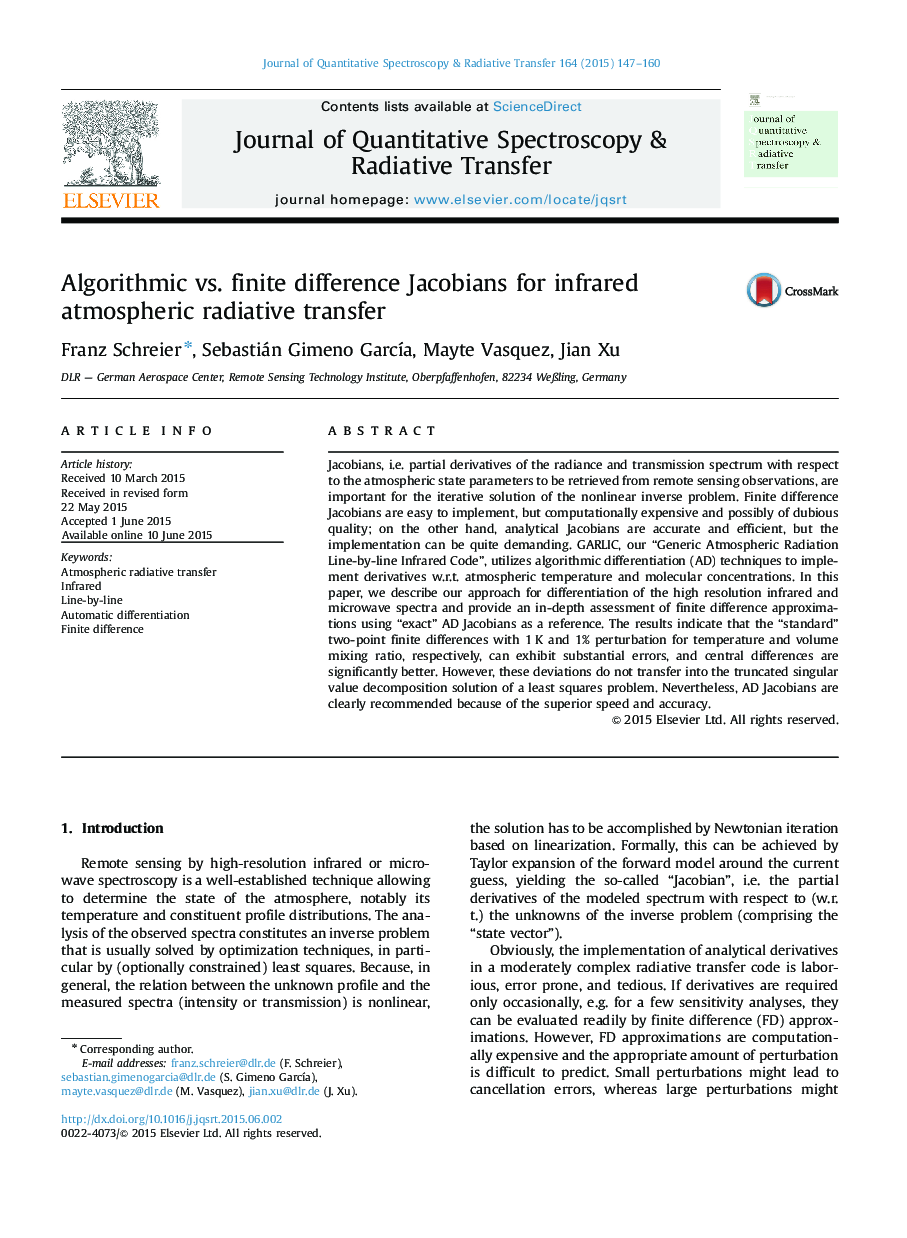| Article ID | Journal | Published Year | Pages | File Type |
|---|---|---|---|---|
| 5427989 | Journal of Quantitative Spectroscopy and Radiative Transfer | 2015 | 14 Pages |
â¢Line-by-line infrared radiative transfer modeling.â¢Temperature and concentration Jacobians by algorithmic/automatic differentiation.â¢Two-point finite differences can have large errors, central differences are much better.â¢Singular value analysis reveals minor sensitivity.
Jacobians, i.e. partial derivatives of the radiance and transmission spectrum with respect to the atmospheric state parameters to be retrieved from remote sensing observations, are important for the iterative solution of the nonlinear inverse problem. Finite difference Jacobians are easy to implement, but computationally expensive and possibly of dubious quality; on the other hand, analytical Jacobians are accurate and efficient, but the implementation can be quite demanding. GARLIC, our “Generic Atmospheric Radiation Line-by-line Infrared Code”, utilizes algorithmic differentiation (AD) techniques to implement derivatives w.r.t. atmospheric temperature and molecular concentrations. In this paper, we describe our approach for differentiation of the high resolution infrared and microwave spectra and provide an in-depth assessment of finite difference approximations using “exact” AD Jacobians as a reference. The results indicate that the “standard” two-point finite differences with 1Â K and 1% perturbation for temperature and volume mixing ratio, respectively, can exhibit substantial errors, and central differences are significantly better. However, these deviations do not transfer into the truncated singular value decomposition solution of a least squares problem. Nevertheless, AD Jacobians are clearly recommended because of the superior speed and accuracy.
